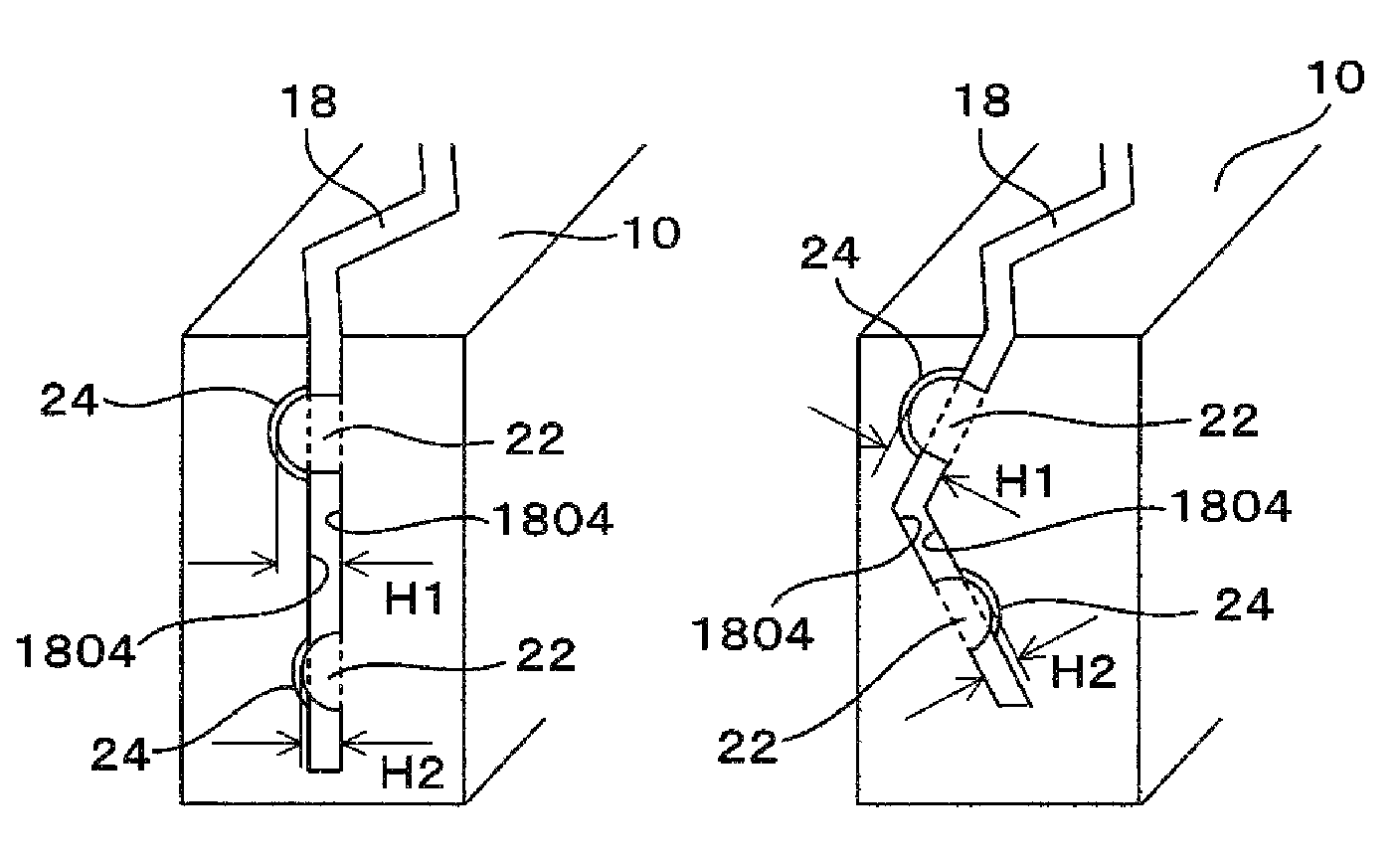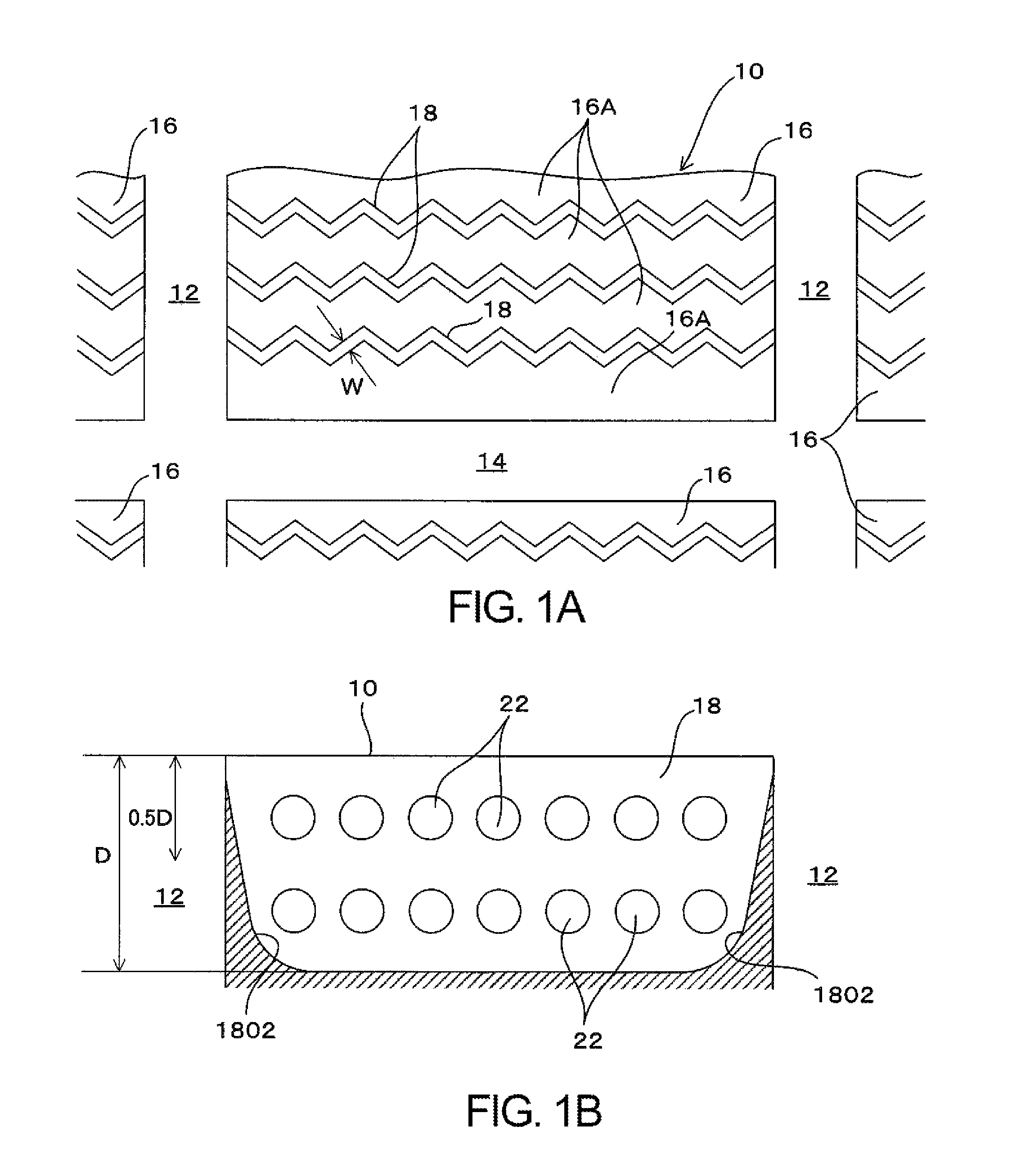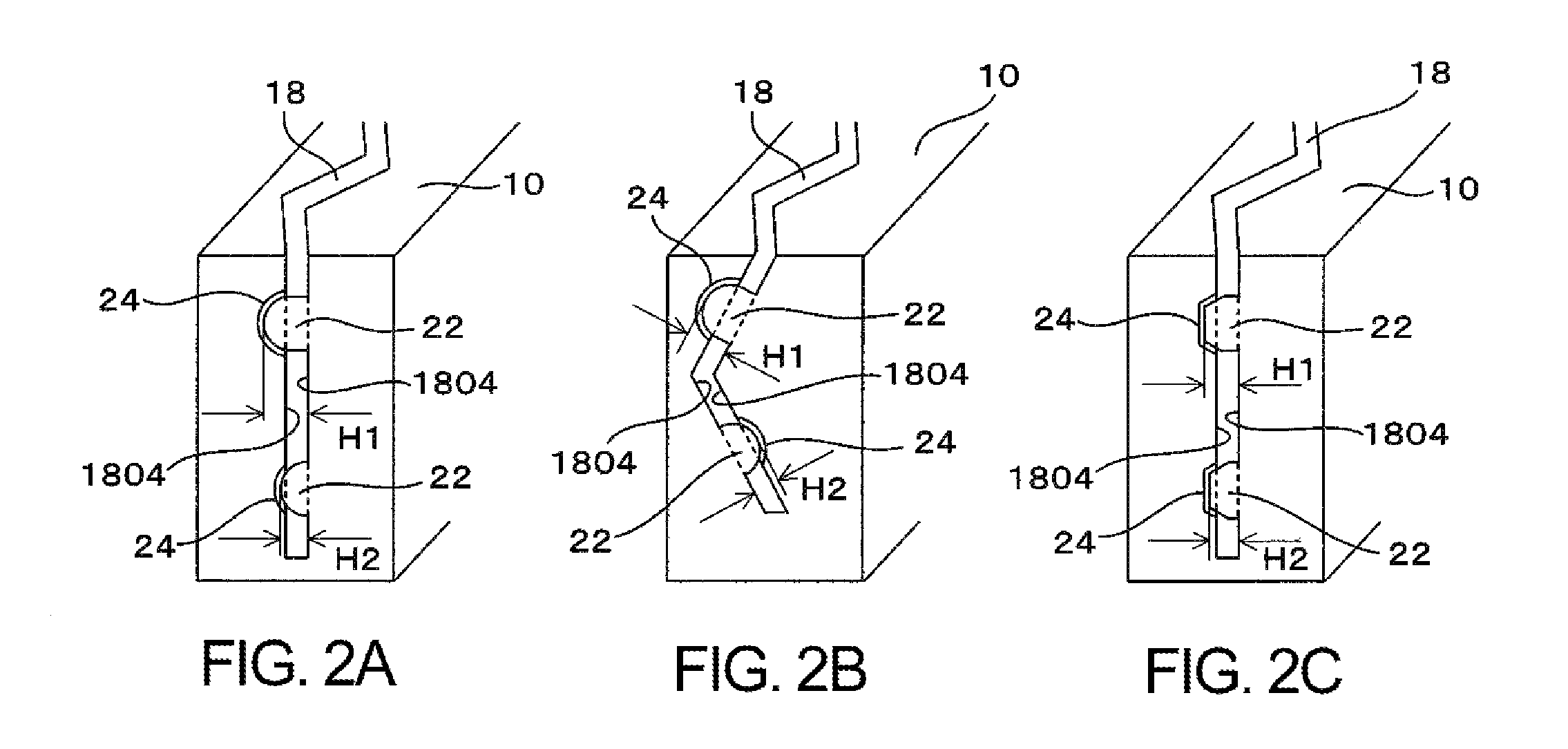Pneumatic tire
a pneumatic tire and tire body technology, applied in the field of pneumatic tires, can solve the problems of decreasing the overall the decline of the increase of the number of edges, so as to achieve the effect of enhancing the braking performance on ice, preventing the excessive collapsing of the portions of the block, and maintaining the rigidity of the block roughly uniformly
- Summary
- Abstract
- Description
- Claims
- Application Information
AI Technical Summary
Benefits of technology
Problems solved by technology
Method used
Image
Examples
first embodiment
[0024]As illustrated in FIGS. 1 and 2, a plurality of vertical grooves 12 extending in a tire circumferential direction and a plurality of lateral grooves 14 that intersect with the vertical grooves 12 are provided in a tread surface 10. Additionally, a land portion provided with a block 16 is provided in the tread surface 10.
[0025]Moreover, a plurality of sipes 18 extending in a tire width direction is provided in the tread surface 10 of the block 16 (land portion).
[0026]A plurality of portions 16A of the block 16 sandwiched by the sipes 18 and portions 16A of the block 16 sandwiched by the sipes 18 and the lateral grooves 14 are positioned on the tread surface 10 side of the block 16 due to the plurality of sipes 18. In other words, these portions 16A of the block 16 partition the sipes 18.
[0027]In order to exert edge effect effectively, a width W of the sipes 18 is preferably 0.3 mm or greater but 1.5 mm or less.
[0028]As illustrated in FIG. 1A, a shape in the longitudinal directi...
example 1
[0041]Radial studless tires having a tire size of 195 / 65R15 provided with protrusions 22 having the configurations shown in FIG. 3 and recesses 24 that engage with these protrusions 22 were assembled on rims having a rim size of 15×6J. The tires were inflated to an inner pressure of 200 kPa and mounted on the four wheels of an RV vehicle having an engine displacement of 2,000 cc. Tests for a Conventional Example and Working Examples 1, 2, 3 and 4 were conducted for dry braking, braking on ice, and braking on ice when the tire is 50% worn.
[0042]Note that the width W of the sipes 18 was 0.4 mm, the depth D was 6 mm, and the length L was 10 mm.
[0043]Additionally, the upper portion protrusions 22 were positioned at a depth 2 mm from the tread surface 10, and the lower portion protrusions 22 were positioned at a depth 4 mm from the tread surface 10.
[0044]Dry braking was measured as a braking distance from a point of brake application to stop when travelling on a dry asphalt road surface ...
second embodiment
[0048]As illustrated in FIGS. 4 and 5, a plurality of vertical grooves 12 extending in a tire circumferential direction and a plurality of lateral grooves 14 that intersect with the vertical grooves 12 are provided in a tread surface 10. Additionally, a land portion provided with a block 16 is provided in the tread surface 10.
[0049]Moreover, a plurality of sipes 18 extending in a tire width direction is provided in the tread surface 10 of the block 16 (land portion).
[0050]A plurality of portions 16A of the block 16 sandwiched by the sipes 18, and portions 16a of the block 16 sandwiched by the sipes 18 and the lateral grooves 14 are positioned on the tread surface 10 side of the block 16 due to the plurality of sipes 18. In other words, these portions 16A of the block 16 partition the sipes 18.
[0051]In order to exert edge effect effectively, a width W of the sipes 18 is preferably 0.3 mm or greater but 1.5 mm or less.
[0052]As illustrated in FIG. 4A, a shape in the longitudinal direct...
PUM
 Login to View More
Login to View More Abstract
Description
Claims
Application Information
 Login to View More
Login to View More - R&D
- Intellectual Property
- Life Sciences
- Materials
- Tech Scout
- Unparalleled Data Quality
- Higher Quality Content
- 60% Fewer Hallucinations
Browse by: Latest US Patents, China's latest patents, Technical Efficacy Thesaurus, Application Domain, Technology Topic, Popular Technical Reports.
© 2025 PatSnap. All rights reserved.Legal|Privacy policy|Modern Slavery Act Transparency Statement|Sitemap|About US| Contact US: help@patsnap.com



